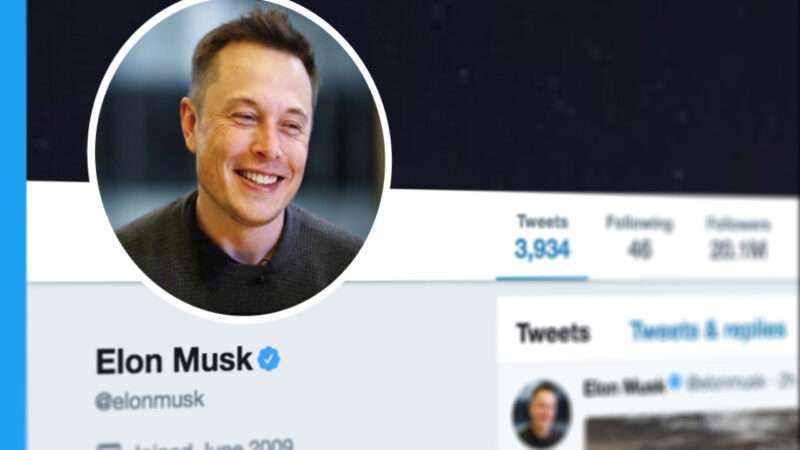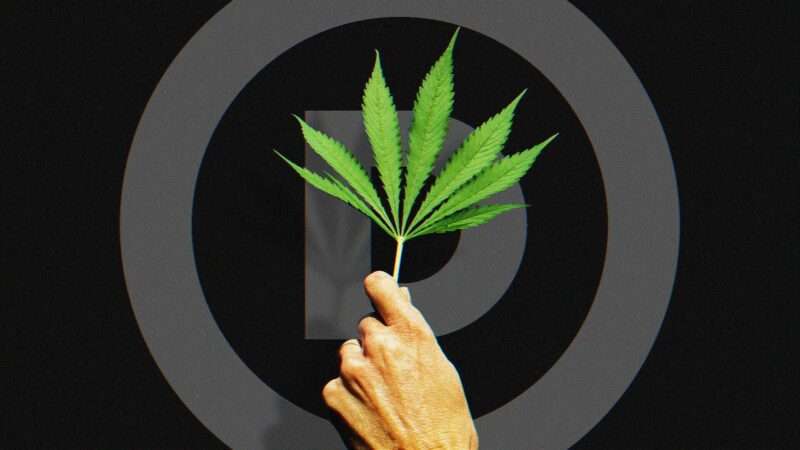
As social media has devolved from a free speech zone to a censorious minefield (my take) or a cesspool of misinformation from which people should be protected (according to people who are wrong) or just a shitty-algorithm-driven mess (probably true), the standard response to critics has been: build an alternative! A fair number of alternatives now exist, some more successful than others. But now tech billionaire Elon Musk puts forward a new approach: buy a stake in an existing platform and champion a culture of free speech. This may well be a boon for open discourse in the short term, but a permanent cure for intolerance requires more.
“Elon Musk took a 9.2% stake in Twitter Inc. to become the platform’s biggest shareholder, a week after hinting he might shake up the social media industry,” Bloomberg News reported on Monday. Musk also gained a seat on the company’s board of directors.
The “shake up” refers to hints Musk dropped about starting a new social media platform that would use open-source algorithms and have a stronger dedication to free speech than much-criticized mainstream platforms including Facebook, YouTube, and, especially, Twitter. Tellingly, though, Musk not only became Twitter’s largest shareholder, but before the Schedule13G disclosing the acquisition was revealed, he asked Twitter users whether they thought “Twitter rigorously adheres” to free speech. About 70 percent of self-selected respondents said “no.”
Among those endorsing Musk’s take on Twitter’s need for change is, apparently, Twitter founder Jack Dorsey, who retweeted a related poll about the importance of basing the social media platform on open-source algorithms. He stepped down as Twitter’s CEO last year and will leave the company’s board next month. Dorsey took flack during his tenure as CEO, but there were signs that he was a free speech advocate navigating conflicting demands from government, politicized staff, and mutually loathing factions in a divided society.
“The pressure comes from both above and below. You’ve got the United States Senate basically saying: ‘Nice little social network you got there. Real shame for anything to happen to it,'” tech entrepreneur David Stack told Bari Weiss last week. “From below, you’ve got the employees and the tweet mobs and basically forming these boycotts and subjecting the management of the company to pressure.”
Dorsey criticized his own company’s suppression of the since-verified Hunter Biden laptop story, long resisted his own employees’ calls to ban former President Donald Trump from the platform, and told Congress that neither tech companies nor government should be “arbiters of truth.” His departure was not a good sign for a service that once touted itself as “the free speech wing of the free speech party.”
“Anyone who harbors concerns that social media have already grown too intolerant of dissenting opinions—too inclined to silence viewpoints that depart from liberal orthodoxy—should be worried about Dorsey leaving,” Reason‘s Robby Soave wrote at the time.
Dorsey now regrets the centralization of the internet and champions Bluesky, a project intended to restore the ability for “people to freely interact and create content, without a single intermediary.” Platforms built on such a decentralized approach would lack kill switches or the ability to turn public panics into policy; users would exercise control over their own experiences.
But one problem that alternative platforms have faced aside from public pressure and commercial shunning is attracting users. While some half-assed attempts (cough Parler cough) at building new social media platforms have made the existential mistake of relying on services provided by companies hostile to their missions, it is possible to build an independent platform that’s relatively self-contained.
“Over the past four years we have been banned from multiple cloud hosting providers and were told that if we didn’t like it we should ‘build our own,'” Gab, a Twitter competitor favored by the nationalist right announced in 2020. “So, that’s exactly what we did.”
Since then, Gab has expanded into video and now is working on an advertising service and payment systems. But, while successful, it caters to a niche community that shares its very particular worldview. That, I’m happy to say, is not all of us.
For many people hoping for a renewed “free speech wing” commitment at a larger platform shared by people of multiple points of view, Musk’s large stake in Twitter and his presence on its board comes as a promising sign. A self-proclaimed “free-speech absolutist” and critic of politicized environmental, social, and governance standards for investing and business management, Musk is already sending a message to the tech industry, to Twitter staffers, and to the censorious multitude, whatever his intentions.
“Will Musk now agitate for Twitter to alter its policy on moderating content in the name of freer speech?” The New York Times speculated on Monday. “Will he push for Twitter to open up its algorithm, which the company’s co-founder and former C.E.O. Jack Dorsey appeared to support last week? (Musk and Dorsey are friendly.)”
But the problem with any movement based around one person is that the whole movement is only as good as that person and shares his or her flaws and vulnerabilities. Musk is already at war with the Securities and Exchange Commission, which isn’t shy about weaponizing its power against opponents. His Twitter move could draw further regulatory attention and potentially hobble his efforts. Musk also faces accusations of retaliation against critics within his company and in the outside world. Whatever the truth of those claims, it’s easy to see that the clout he wields at Twitter might just as easily be wielded against free speech as in its favor.
For now, Elon Musk’s acquisition of a large stake in Twitter and a board seat allowing him to influence the social media company’s policies is a welcome temporary victory for free speech advocates. If nothing else, it’s a reminder to the self-righteous set that their dominance isn’t inevitable and that calls for tolerance of dissent are, once again, coming from inside their own institutions.
But the long-term solution for protecting free speech can’t lie in the hands of one person. We need alternatives that cater to different audiences and aren’t reliant on the good will of their critics. We should encourage decentralization that lets people control their own experience and eliminates the ability of any government or pressure group to muzzle those deemed unworthy. And, most importantly, we have to encourage a culture of free speech that values protections for dissent without regard for our agreement or disagreement with other people’s views.
The post Elon Musk's Twitter Stake Is Promising, but Not a Permanent Fix for Free Speech appeared first on Reason.com.
from Latest https://ift.tt/EuGUJ49
via IFTTT









